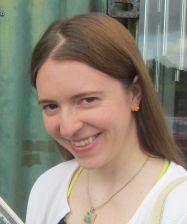The History of Bees by Maja Lunde and Diane Oatley (translator)
| The History of Bees by Maja Lunde and Diane Oatley (translator) | |
|
| |
| Category: General Fiction | |
| Reviewer: Rebecca Foster | |
| Summary: Blending historical, contemporary and future story lines, this inventive novel, originally published in Norway in 2015, is a hymn to the dying art of beekeeping and a wake-up call about the environmental disaster the disappearance of bees signals. The plot strands share the strong themes of troubled parenthood and the drive to fulfil one's purpose. Like David Mitchell, Lunde juggles extremely different time periods and voices admirably. | |
| Buy? Yes | Borrow? Yes |
| Pages: 400 | Date: September 2017 |
| Publisher: Scribner UK | |
| External links: Author's website | |
| ISBN: 9781471162749 | |
| Video:
| |
Bees are a handy symbol of the planet's environmental degradation, as you'll know if you've read anything by Dave Goulson – whose endorsement is featured proudly on the cover of this U.K. release of Norwegian children's writer Maja Lunde's first novel for adults. The creatures also provide subtle links between the book's three story lines.
First we hear from Tao, who in 2098 China has to perform the gruelling hand-pollination that's been necessary ever since bees disappeared once and for all in a worldwide environmental collapse around 2040. Next we're in 1851 Hertfordshire, where William Savage, a Darwin-like naturalist and seed shop proprietor, emerges from a deep depression to work on a new beehive design.
The final first-person narrator is George, a third-generation beekeeper based in Ohio. His near-contemporary account gives a clear sense of the hard, thankless work involved in beekeeping, especially when he's not sure his vegetarian, academically oriented son will take over from him. He also witnesses first-hand the onset of Colony Collapse Disorder (CCD).
Although these three voices are extremely different – Tao is straightforward and determined; William is melancholy and observant; George is folksy and hot-headed – there is never any doubt that they belong together in this novel. For one thing, bees are a shared fascination, and there are a few bee-related connections between these specific characters that are only revealed late on.
But there's another theme that joins the three narrators: each of them is deeply concerned about a son. Tao's life is turned upside down when her only child, Wei-Wen, is taken ill during a picnic on one of her rare holidays, and she travels to Beijing and does desperate research to try to save his life. William has seven pretty daughters but is disappointed in his only son, Edmund, who lives a dissipated life far from what his parents want for him. George, too, feels that he and his son Tom have different priorities and never quite connect.
Lunde is pretty much equally skilled at evoking a dystopian future, a Victorian past and the American present. The only sections of the book that dragged for me were those in Tao's narrative that explain the world's collapse. I find that it's best for speculative fiction in this vein (by Margaret Atwood et al.) to leave the exact how of the environmental catastrophe to the reader's imagination, as a blow-by-blow can end up feeling tedious.
However, from page to page this is a very readable novel that hardly seems like a translation. I appreciated the various symbolic uses of bees. For instance, William contrasts fatherhood and productivity thus: 'Like the drone, I sacrificed my life for procreation.' For Tao, raised in a country where individuals can feel swallowed by the vastness of the wider population, a bee colony serves as a reminder of the benefits of working collectively for the greater good. Moreover, bees represent a middle ground between wildness and domestication: 'bees cannot be tamed. They can only be tended, receive our care.'
Though it responds to the seriousness of recent and projected future ecological disasters, this novel is not a downer. On the contrary, its final word is 'hope'. It's also a very beautifully produced book, with an embossed bee on the dust jacket, a black and gold honeycomb pattern across the spine and boards, and a detailed black-and-white bee illustration featured in the corners of occasional pages. If you appreciate lovely physical books and have enjoyed work by David Mitchell, Margaret Atwood or Dave Goulson, I can heartily recommend this.
Further reading suggestions: Generation A by Douglas Coupland also opens with the disappearance of bees. Put Cloud Atlas by David Mitchell and A Sting in the Tale by Dave Goulson together and you might get something like Lunde's book.
Please share on: ![]() Facebook,
Facebook, ![]() Twitter and
Twitter and
![]() Instagram
Instagram
![]() You can read more book reviews or buy The History of Bees by Maja Lunde and Diane Oatley (translator) at Amazon.co.uk Amazon currently charges £2.99 for standard delivery for orders under £20, over which delivery is free. (Paid link)
You can read more book reviews or buy The History of Bees by Maja Lunde and Diane Oatley (translator) at Amazon.co.uk Amazon currently charges £2.99 for standard delivery for orders under £20, over which delivery is free. (Paid link)
![]() You can read more book reviews or buy The History of Bees by Maja Lunde and Diane Oatley (translator) at Amazon.com. (Paid link)
You can read more book reviews or buy The History of Bees by Maja Lunde and Diane Oatley (translator) at Amazon.com. (Paid link)
Comments
Like to comment on this review?
Just send us an email and we'll put the best up on the site.


